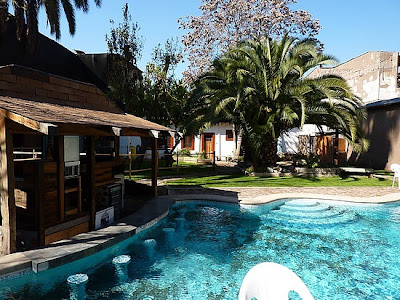Valparaíso is an artsy bohemian fishing town about two hours away from Santiago. It is also where poet Pablo Neruda had a home "La Sebastiana."
As we hiked the hill up to Pablo's home, Jim mentioned one of the cheesy jokes that Pablo liked to tell.
I responded "I know that's funny, but I'm just not laughing."
To which Jim recounted, "Hmm. Pablo Neruda said, 'Laughter is the language of the soul.'"
Leslie: "I am familiar with the works of Pablo Neruda."
All joking and Simpson's references aside, Valparaíso is a maze of small, curvy streets and stairs all steeply heading up the hill away from the coast. We had heard that the city was built with no "master plan" and so getting around the labyrinth is a little adventure.
 |
|
It is also an electrician's nightmare!
Graffiti or street art is either encouraged or tolerated. So there is a combination of vibrant colored buildings with free art all over them. We spent most of our time walking around admiring the walls around the city. Because of the city's uniqueness, it was declared a UNESCO world heritage site. Also their funicular elevators (highly-inclined cable cars) are one of the world’s 100 most endangered historical treasures as named by World Monuments Fund. (Who knew there was such a foundation!) We of course rode on the the funiculars to get around town.
For lunch we stopped by the fish market where there are restaurants on the second floor. It is hard to choose which to stop at as you don't want to show interest in any particular menu laid outside the restaurant because then you will be hassled by the waiters to come in. We did just finally choose a place and we had seafood empenadas (with razor clams, mussels and shrimp) and a huge bowl of ceviche.
Finally, we did stop by Pablo Neruda's home "La Sebastiana." It was the highlight of our stay in Valparaíso. It is unique and quirky just like the town and the poet, and through the audio self guided tour, it felt like you could actually see him sitting in his office contemplating the sea. Unfortunately, pictures are not allowed in the house so we only have pictures from the outside.
After a few days we were ready to get out of the congestion and craziness of the city and head for the beaches.

